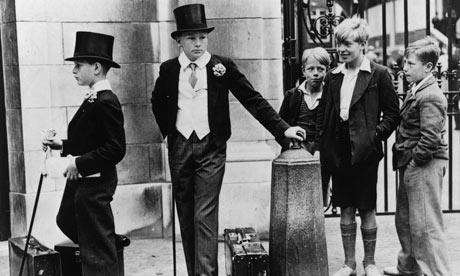Sound
Definition
of Sound:
Noun
The vibrations that travel through the air or another
medium and can be heard when they reach a person's or animal's ear.
In class
we were discussing sound and decided to start the lesson off by identifying 5
different very famous theme tunes of TV programs. There were two very important
questions we had to answer these were:
ü How does it make you feel?
ü What type of program are you expecting it to be?
The Fresh Prince of Bel Air:
How does
it make you feel?
- This sound makes me feel happy and just puts me in a
good mood. It also tempts me to sing along to the rap.
What
type of program are you expecting it to be?
- I personally think the music was aimed at kids because
it is upbeat but also being there is a rap it might include teenagers. Another
thing is the rap it states that he is from west Philly indicating it is an
American TV show.
The A-Team:
How does it make you feel?
- The sound makes me feel empowered and important in some
way, but I personally feel as if I am on a mission whilst listening to this
music.
What
type of program are you expecting it to be?
- This music is mainly aimed at adults; I say this
because it sounds as if it had aged comparing to the first one. When I first
listened to it I instantly thought about super heroes that are on a mission of
some sort. Also the sound/music varies between American and British.
Dr Who?
How does
it make you feel?
- The sound is very dark and makes me wonder what is
going to happen next. As if I am actually part-taking in the TV show.
What
type of program are you expecting it to be?
- This music is aimed at Sci-Fi fans because of the way
the music has been synthesised. Being that I have said that I do believe with
music like that there will be a lot of alien characters, maybe appealing to
young boys.
Eastenders:
How does
it make you feel?
- The sound is very happy at the beginning but I think as
it gets to the middle of the music not only does it sound 'Christmassy' but as
if it can be dark at the same time.
What
type of program are you expecting it to be?
- This music is very family friendly so I believe it is
aimed at any ages group but I also think it can be very dramatic because of the
dark sounds (bang bang).
Hollyoaks:
How does
it make you feel?
- The sound is very upbeat and happy.
What
type of program are you expecting it to be?
- The music also sounds family friendly but also like a
documentary intro. What I mean by this is near the end of the theme tune it
sounded like animals, making me think it would be an intro for a wildlife show.
After the task we then went on to discuss the technical
aspects of sound and the key words.
Keywords:
Soundtrack - The narrow strip at one side of a movie film that carries the
sound recording.
Theme Music - A melody used to introduce or identify a television or radio
programme, a dance band, a performer.
Sound Effects - A
sound other than speech or music made artificially for use in a play, film, or
other broadcast production.
Ambient Sound - The background sounds which
are presented in a scene or location.
Dialogue - A
conversation between two or more people as a feature of a book, play, or film.
Voice Over - A
piece of narration in a film or broadcast, not accompanied by an image of the
speaker.
Direct Address - The use of a term or name for the person spoken to,
as in securing the attention of the person.
Diegetic Sound (natural) – The sound of
which is visible on the screen or what is implied to be presented by the action
of the film these are:
ü Voices of characters
ü Sounds made by objects in the story
ü Music represented as coming from instruments in the story space
Non - Diegetic Sound (man-made) – The sound of which is neither
visible on the screen nor has been implied to be present in the action these
are:
ü
Narrator's
commentary
ü
Sound
effects which is added for the dramatic effect
ü
Mood
music
Sound Bridge - When the
scene begins with the reminder sound from the previous scene before the new
sound begins.
Parallel Sound - The sound you hear that would
naturally go hand in hand with the film on screen.
Contrapuntal Sound – The sound
you hear that you wouldn’t associate with the events on screen.
We
then colour coordinated the list with Blue Diegetic
sounds and Red as Non – Diegetic sounds. As you
see in the list ‘Direct Address’ is coloured with both red and blue this means
that it can be both.
Why is sound used in television programs?
From my point of view I think sound is used in television
programs because without sound we would not know what the characters are saying
and they wouldn't know what mood they are meant to set. Causing upset
throughout the audience.







